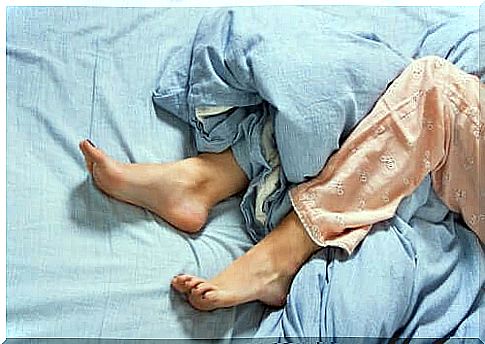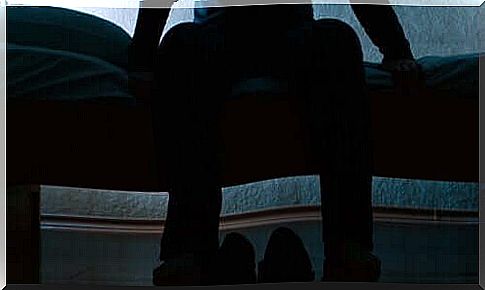Restless Bones And The Motor Cerebral Cortex

Restless legs, or Restless Legs Syndrome (RLS), is difficult to describe. In fact, some people believe that their legs move on their own. What actually happens, however, is that they have a constant need to move the lower extremities to put an end to the uncomfortable feeling. Some say they feel tingling up and down their legs. Discover the most important characteristics of this syndrome and how it is related to the motor cerebral cortex in this article!

The clock has just passed midnight. I’m trying to sleep, but it’s impossible. When I am about to fall asleep, a tingling sensation appears in my legs. I have to move them so I lift one leg and shake it in the air. I lift the other and repeat.
The tingling starts again a few minutes later. I get up and walk back and forth in my bedroom, I massage my legs, and even beat them a little. The tingling is reduced. I have managed to alleviate the symptoms of restless legs enough to fall asleep.
What are restless legs?
According to the National Institute of Neurological Disorders and Stroke (NINDS), restlessness in the legs is a sensory-motor disorder with five main criteria for diagnosis:
- A strong and often overwhelming need or an urge to move the legs, which is often associated with abnormal or unpleasant feelings.
- The urge to move your legs begins or gets worse during rest or inactivity.
- The urge to move your legs is relieved at least temporarily and partially or completely when you move.
- The urge to move your legs begins or gets worse in the evening or at night.
- The four symptoms mentioned above are not due to another medical or behavioral condition or disease.
RLS and the motor cerebral cortex
Some of the main causes of this condition are iron deficiency and the use of tricyclic antidepressants, as well as selective serotonin reuptake inhibitors (SSRIs), lithium, and caffeine. New findings, however, link restless legs to an unusual motor cortical function.
Researchers at Johns Hopkins University discovered a possible cause of this syndrome: Hyperactivity in the motor cerebral cortex.
Rachel Salas of John Hopkins University assures us that “the area of the brain that controls the bones shows increased cortical excitability (ability to respond to a stimulus) in the motor cerebral cortex.”

Treatment of restless legs
Pharmacological treatment
- Dopamine agonists such as ropinirole, pergolide or pramipexole.
- Benzodiazepines help to soothe the tingling sensation and make it easier to fall asleep.
- Anticonvulsants (anticonvulsants), especially gabapentin and carbamazepine.
- Opioids can also be used due to the analgesic effect.
Non-pharmacological treatment
- Have a good sleep routine and go to bed at the same time every day.
- Reduce your intake of or stop consuming caffeine, alcohol and nicotine.
- Exercise regularly.
Conclusion
There is still a lot to discover about restless legs to improve the quality of life of those who suffer from it.
However, reducing the symptoms associated with this syndrome will lead to better sleep hygiene and sleep quality. In this way you can get rid of drowsiness, fatigue, exhaustion and mood swings.









